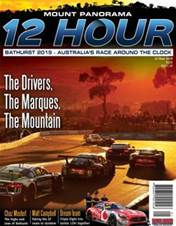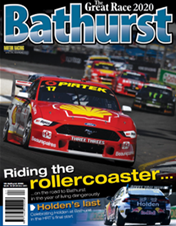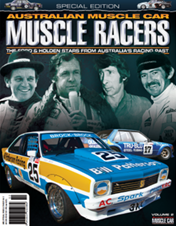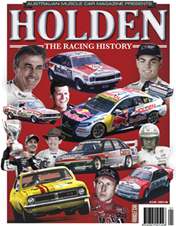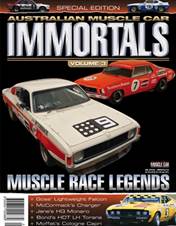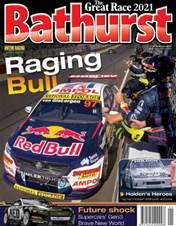1968 Holden HK Monaro GTS 327
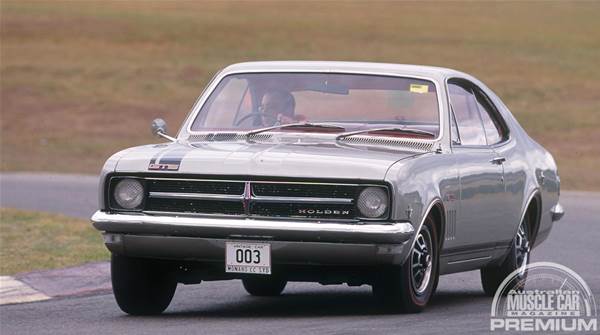
Holden's first real image car, the HK Monaro, caused a sensation upon its launch in July 1968. It injected some serious excitement into the local automotive scene and drew plenty of traffic to Holden dealerships.
The first Monaro, with its gorgeous two-door coupe styling, was just so different to any locally-built car previously offered to Australian buyers. The new Holden's purpose was twofold: to appeal to a younger demographic influenced by the burgeoning muscle car trend in America and provide General Motors with a frontline weapon on the racetrack.
The latter job fell to the GTS 327, with its Chevrolet 5.3-litre engine (featuring a Rochester four-barrel carburettor), mated to a Saginaw manual four-speed gearbox and 10-bolt Positraction limited slip rear axle assembly. Another important component contributing to the Monaro's success on the racetrack was the 25-gallon long-range fuel tank.
All Monaro 327s came with the GTS cosmetic package that included unique offset stripes and interior enhancements like the console-mounted tacho.
GTS 327s filled the first three places in the 1968 Hardie-Ferodo 500, securing Holden's first win in the event and the model's place in Aussie muscle car history.
The GTS 327 is revered today as the first of the legendary Monaro V8s and the car ultimately proved responsible for the creation of the Falcon GT-HO special racing model. It signalled to Ford and Chrysler the General's clear intention that it would be a serious contender in production car racing. Winning the annual Bathurst 500 became central in the minds of the big three's engineers and marketers.
Key stats
Number Produced: 1192
Power Output: 250bhp (186kW)
Top Speed: 125mph (200km/h)
0-100km/h: 7.6 seconds
Standing 400m: 16.4 seconds
Price New: $3790
Did you know?
The GTS 327's first Bathurst win is the model’s defining victory, but then Holden engineer Bob Watson gave the car its first major win in the 1968 Datsun 3-Hour at Sandown.
1969 Holden HT Monaro GTS 350
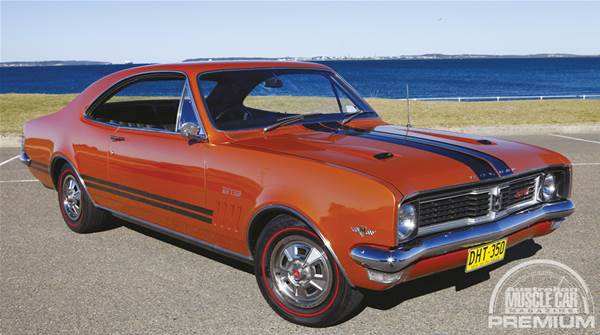
The GTS 350 is revered because it beat the more fancied XW Falcon GT-HO fair and square in a straight fight on the Mountain. Its success at Bathurst 1969 was the springboard for the Holden Dealer Team to maintain a race and rally presence for Holden for many years to come despite GM's global ban on motor racing.
With its four-bolt main, high-flow air filter, special lightweight wheels, long-range fuel tank, rear anti-tramp suspension and limited slip diff this is very much a pecial series production Bathurst-bred race car.
The HT model GTS featured the bigger 5.7-litre engine – Chevrolet's legendary small-block – plus a wider track, a panel mounted tachometer, Muncie 4-speed gearbox, thicker front brake discs and slotted wheels.
The most obvious external change across the HT range was a revised grille made from ABS plastic, along with a more squared-off rear section, with stacked tail lights. The GTS package added bonnet scoops, stripes and unique wheel trims, along with the option of houndstooth trim.
It was the last full-sized Holden with a factory competition focus until the 1990 VN Commodore Group A.
The appeal for many enthusiasts is that it's the car in which Peter Brock made his Bathurst debut. But it was Colin Bond and Tony Roberts who got the job done that day.
The following year Norm Beechey's famous yellow HT GTS 350 won Holden's first ATCC crown. Beechey's car was named by this magazine as Australia's greatest competition muscle car.
Key stats
Number Produced: 750
Power Output: 300bhp (224kW)
Top Speed: 208km/h
0-100km/h: 7.5 seconds
Standing 400m: 15.8 seconds
Price New: $3995
Did you know?
Not only did Colin Bond and Tony Roberts win Bathurst in 1969, the pair backed up a few months later to win the 1970 Surfers Paradise 12-Hour.
1970 Holden LC Torana GTR XU-1
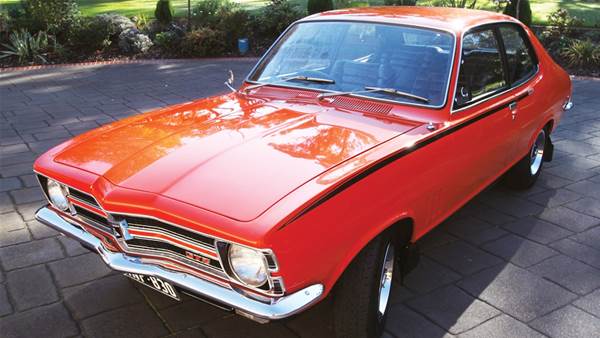
It's fair to say that the LC Torana GTR XU-1 changed the face of Australian motoring and motorsport. By shoehorning the engine from a large car into the body of a small car, in true muscle car tradition, General Motors-Holden created an affordable, practical and sporty new model.
In doing so, it also showed that winning races was not always determined by the size of the dog in the fight, but the more the size of the fight in the dog. A standout performer in both racing and rallying, the cheeky XU-1 was created during a global ban on racing, yet became the great all-rounder of Australian muscle cars.
It was launched in July 1970 and featured an uprated 186ci engine with revised camshaft, larger valves and triple Stromberg carbies, along with a bigger fuel tank, four-speed gearbox, uprated brakes and suspension.
It was quickly on the pace in series production competition, posting its first major victory in the Toby Lee 100 at Oran Park in September in Bob Morris's hands. Outright victory in the Bathurst 500 eluded the LC XU-1, but three wins by Colin Bond secured the 1971 Manufacturers Championship for GM-H. This was the same year Bond and George Shepheard won the Australia Rally Championship in the pocket rockets, as well as countless other rally events.
Just prior to Bathurst 1971 Holden homologated a series of enhancements which saw 299 XU-1s produced that are now referred to as the 'Bathurst' XU-1s.
Key stats
Number Produced: 1397
Power Output: 160bhp (119kW)
Top Speed: 125mph (200km/h)
0-100km/h: 8.4 seconds
Standing 400m: 16.1 seconds
Price New: $3140
Did you know?
Holden went down the Torana six route for its Bathurst challenger as GH-H’s chief engineer refused to build a ‘Monaro GT-HO’ - i.e. a direct competitor for Ford’s racer for the road.
1970 Holden HG Monaro GTS 350
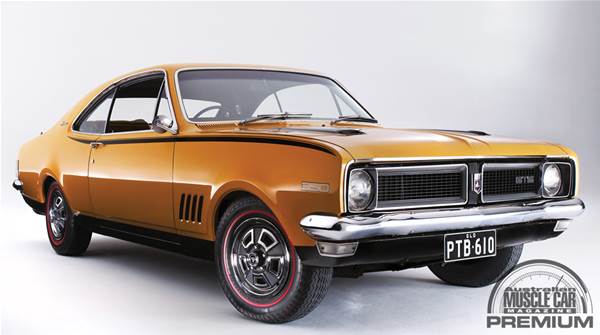
In Issue #51 of the AMC magazine we posed the question: is the HG Monaro GTS 350 the uncrowned king of local muscle cars? A loaded question if ever there. But pertinent, as the HG GTS 350 manual is a genuine 140mph, 14 second 'supercar' capable of going toe-to-toe with a Falcon GT-HO Phase III.
So why hasn't the HG GTS 350 received due recognition even though it's the acknowledged king of the 81837 Holdens? It simply didn't race in the Bathurst 500, much less win the October classic.
“The trap with assessing a muscle car icon against only Bathurst results is that it's too easy to overlook a model that was at the top of its game at the time,” AMC #51's cover story began.
And overlooked this car has most certainly been. Its predecessors, the HK GTS 327 and the HT GTS350, were Holden's frontline fighters at Bathurst in 1968 and '69 and duly brought home the bacon.
In 1970 the role of Holden's 'race car' had shifted to the new LC Torana XU-1 and initial plans to race the HG Monaro had to be put aside. Instead, the HG GTS Monaro was marketed as more of a grand tourer. 'Command Performer' was the title applied by Holden.
This was a car capable of maintaining two-miles-a-minute on the open road for hours at a time.
In 2010, to celebrate the model's 40 th birthday, AMC put a surviving example through its paces on the test track without caning it. We recorded times a whisker slower than Wheels' October 1971 Phase III road test.
Key stats
Number Produced: 415
Power Output: 300bhp (224kW)
Top Speed: 140mph (210kmh)
0-100km/h: 7.5 seconds
Standing 400m: 15.8 seconds
Price New: $4174
Did you know?
In late 1970, with no official announcement, GM-H killed off the GTS 350 long before the HG range was replaced by the HQ. There were many factors behind this decision including the heat that RACV president Leslie Perrott was applying to GM-H about the ‘killer cars’ hitting Aussie roads. Growing insurance premiums were also killing demand.
1971 Holden HQ Monaro GTS 350

Holden's all-new HQ series, introduced in July 1971, boasted fresh styling, unitary construction, redesigned suspension, improved brakes and modern interior. It was the first all-new Holden since the Holden car was launched in 1948 and was conceived from the outset with Australian conditions in mind.
The model range was greatly expanded and performance enthusiasts were well catered for with the Monaro, available in either two or four-door (from early 1973 on) guise for the first time.
Boasting steel sports wheels, well equipped premium interior and revised exterior styling, the Monaro GTS package had the 253ci V8 as standard, with either the 308ci or 350ci V8s optional, along with a choice of either four-speed manual or the Trimatic automatic transmission.
Inside the GTS's cabin, there were bucket seats (with houndstooth check seat trim an option), a gunmetal-finish dash with full instrumentation, including a tacho.
The exterior came with blacked-out grille and headlamp surrounds, bonnet black-outs, triple vents behind the front wheel arches and unique wheel trims.
The HQ Monaro GTS certainly looked the business and Holden's advertising pitch summed it up nicely with the line “Where's the action? Right here.”
The coupe is still held in high regard by enthusiasts today and, not surprisingly, it's the GTS 350, with the imported 5.7-litre small block Chevrolet V8, that commands top dollar today.
Of course, HQ Monaro values are not in the same stratosphere as the first generation Monaros, which, in HK and HT guise, won Bathurst as Holden factory racers. However, the HQ Monaro did have a motorsport connection via Bob Jane's Improved Production example that ran in the ATCC and later Sports Sedan competition.
Key stats
Number Produced: 404
Power Output: 279hp (205kw)
Top Speed: 201km/h
0-100km/h: 9.4 seconds
Standing 400m: 15.25 seconds
Price New: $4630
Did you know?
The HQ was the biggest selling Holden model of all time.
1972 Holden LJ Torana GTR XU-1
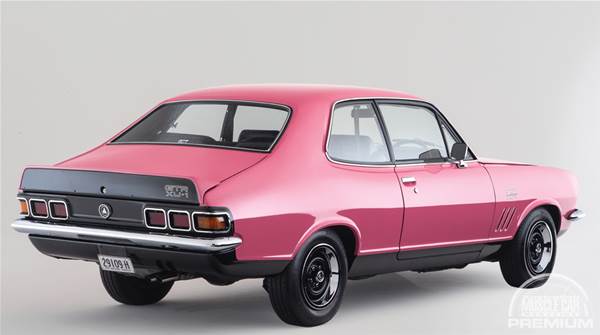
For all of the LC GTR XU-1's game-changing credentials, it was the LJ version's success on a 6.172km ribbon of road on the NSW Central West plains which etched the nameplate firmly into Aussie automotive immortality.
When Peter Brock beat Ford Falcon GT-HO Phase III-equipped Allan Moffat in the rain-affected 1972 Hardie-Ferodo 500, the XU-1 became an instant icon. It was an against-the-odds victory in the first ever wet Bathurst, conditions tailor-made for the smaller car.
In the ensuing four decades the LJ XU-1 has taken on an almost mythical motoring status. Yet, there's more to its enduring appeal than just its racing success. The road-going LJ XU-1 was one tough-looking little car.
A mild facelift gave the 1972 release LJ a tougher stance, one that provided enduring appeal to blokey-blokes more accustomed to bigger cars. Under the skin the LJ XU-1 benefitted from a power boost, thanks to the fitment of the HQ's 202ci (3.3-litre) engine, with triple 175CD carburettors.
Inside the cabin improvements were made to the seats and dash. Continual changes were made to the LJ XU-1 over the two years it was Holden's race model, straddling the end of the Series Production era (1972) and the start of the Group C Improved Production rules (1973).
Again, just prior to Bathurst 1973, Holden homologated a series of enhancements via the sale of so-called 'Bathurst' XU-1s. These are among the most desirable of XU-1s today. Of course, none are undesirable, as Aussies have always naturally gravitated to the underdog.
Key stats
Number Produced: 2179
Power Output: 125kW
Top Speed: 210km/h
0-100km/h: 8.3 seconds
Standing 400m: 15.7 seconds
Price New: $3455
Did you know?
Wet conditions – and Peter Brock’s mastery of them – certainly contributed to the LJ XU-1 most famous victory. However, no fewer than five Toranas crashed out that year, 1972, including Colin Bond.
1974 Holden LH Torana SL/R 5000 L34

The SL/R 5000 was Holden's first V8 Torana developed for Bathurst and ranks as one of the General's most successful track weapons. Back-to-back victories in the Great Race in the hands of two dealer-entered – as opposed to Dealer Team – cars sealed the L34's place in Aussie racing history.
However, the road to Bathurst glory was long and difficult due to serious production line engineering compromises and the general unreliability of the early Group C cars. The model stands as a tribute today to Holden Dealer Team head honcho Harry Firth and his clever engineers who worked tirelessly to turn it into a winner.
The SL/R 5000 embodied the traditional concept of a muscle car being a medium-sized vehicle being powered by a big engine. The fact the bread and butter LH Toranas were 'shopping trolley' four- and six-cylinder cars merely serves to highlight this fact.
The L34 was a road-going model that, thanks to the body treatment, looked like it was designed for racing – prominent front spoiler with brake and engine cooling apertures, large 'ducktail' rear spoiler and those wheel-arch flares.
Of the 263 L34s built, Torana experts estimate that just 30-40 unmolested examples live on today with the same engine, gearbox and diff with which they left the factory 41 years ago. So their rarity has fuel desirability. So too has the fact the L34 was involved in the most dramatic Bathurst 1000 finish in the race's history to that point – Bobby's Morris's teary 1976 win.
Key stats
Number Produced: 263
Power Output: 240hp (179kW)
Top Speed: 194km/h
0-100km/h: 8.7 seconds
Standing 400m: 16.0 seconds
Price New: $6609
Did you know?
Supply issues led to Holden supplementing the L34’s bolt-on fibreglass flares with plastic versions. It’s not unusual for unmolested survivors to be equipped with original plastic flares or even a combination of plastic and fibreglass.
1974 Holden HJ Monaro GTS
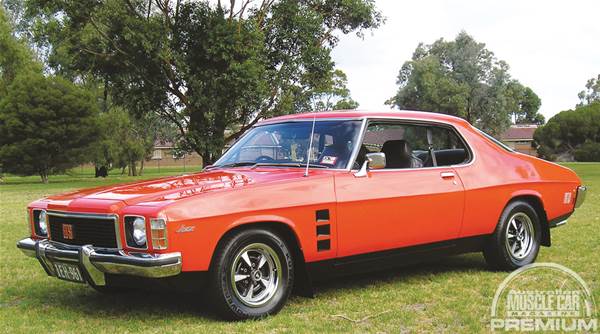
For one reason or another HJ-HZ Monaros haven't featured prominently in Australian Muscle Car magazine over the years. It's partly because they lack the performance of the earliest Holden coupes bearing the Monaros name. It's also because they lack the mystique and credibility that comes with sporting success.
But, taking a step back for a moment, many blokes today simply lust after the machines that turned them on when they were pimply teens in the 1970s and '80s. They had no idea back then that some cars were more show than go. To these characters, muscle cars are about beefcake looks and rumbling V8 engines rather than standing 400 metre times. And affordability today. So no 'most desirable' classic Aussie muscle car list should overlook the mid to late 1970s Monaros – the forgotten Monaros.
The HJ Monaro's styling is about as macho as it comes. Introduced in October 1974, the HJ Monaro offered extra comfort, a comprehensive sports instrument panel and greater emphasis on body detailing to further distinguish it from other models in the range. The four-headlight Monaro LS coupe was the entry level Monaro and the GTS continued as a single headlight coupe or four door sedan. All retained the HQ's rear styling.
The HJ was more imposing than its predecessor, with the GTS featuring a prominent, blacked-out grille, bigger wraparound rear lights and more aggressive side vents and decals. The first factory front and rear spoiler options gave the HJ GTS real presence, the deep rear spoiler and new tail lights in particular bolstering its sloping boot line. Gone was the imported Chevrolet 350, replaced by the local 308 with a boosted compression ratio.
Key stats
Number Produced: 606 (coupes), 4574 (four-doors)
Power Output: 179kW (240bhp)
Top Speed: 188km/h
0-100km/h: 10.4 seconds
Standing 400m: 18.1 seconds
Price New: $5098
Did you know?
HJ Monaro GTS coupes were not originally in Holden's plans, but with almost two thousand unsold HQ two-door bodyshells to clear, Holden applied the HJ front to the HQ coupe to move the unwanted metal.
1976 Holden LX Torana SL/R 5000
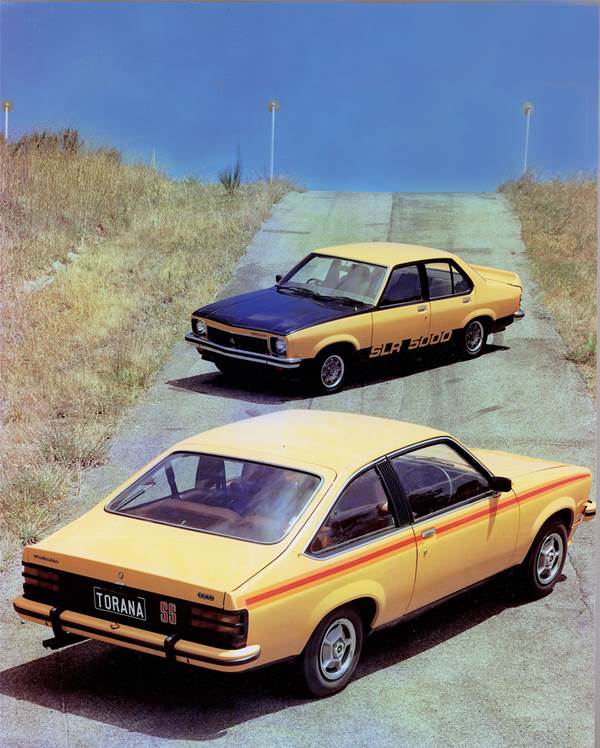
Mention the 'LX Torana' and people immediately think of the A9X. Likewise, drop 'SL/R 5000' into the conversation and it's the LH model which leaps to most minds. Our point? Simply that the four-door LX Torana SL/R 5000 should not be overlooked when it comes to performance Toranas. Nor the SS 5000 hatchback for that matter.
As AMC outlined in issue #35: “Road versions of these two LX models built before the introduction of tougher exhaust emissions laws in July 1976 were free of emission control equipment, boasting a healthy 186kW (250bhp) that made them very quick motor cars. However, the power output of L31 V8s fitted with the emission control equipment post-July 1976 dropped to 161kW (216hp).”
So LX SL/R 5000s built in the first six months of '76 are the most sought after machines. The LX was released in February of that year and represented a mild cosmetic face-lift of the LH. The big news was the introduction of the sporty three-door hatch body-style. Without the hatch the LX update would have ranked as the mildest facelift ever given changes included a new steering wheel, instrument lettering, headlights and blacked-out window surrounds.
Like the LH, the LX Torana sedan range comprised the S, SL, SL/R and the top dog, the SL/R 5000. To prove how important a V8 'hero car' was to a model's line-up, Holden enthusiasts deserted the V8-less UC Torana range in droves upon its release in 1978.
Key stats
Number Produced: Not available
Power Output: 186kW (250bhp) pre-July 1976
Top Speed: 188km/h
0-100km/h: 7.8 seconds
Standing 400m: 15.6 seconds
Price New: $6885
Did you know?
At a time when the Sandman panel vans were enjoying ever increasing popularity Holden decided to add the rather strange option of a tent-like accessory named the "Hatch-Hutch", that fitted to the rear hatch and extended outward from the rear creating a small tent area for camping et al. The Hatch Hutch has since attracted cult-like status because of its oddity and rarity.
1977 Holden LX Torana A9X
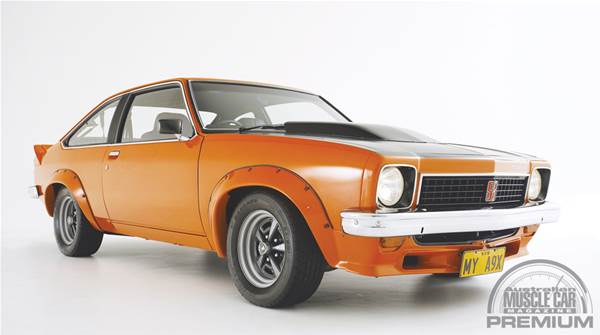
On the track the A9X destroyed its Ford opposition with such superiority that it brought Aussie touring car racing to its knees. In winning the Bathurst 1000 and the Australian Touring Car Championship in both 1978 and 1979 it broke the Blue Oval's spirit, forcing new rules for 1980.
No victory was more crushing than Peter Brock and Jim Richards' six-lap victory in the 1979 Hardie-Ferodo 1000 when Brock claimed a new lap record on the final lap and A9Xs claimed the first eight finishing positions.
Many Holden enthusiasts consider the A9X Torana to be the most successful Aussie touring car released by GM-H. The A9X was introduced in 1977 as a 'Performance Equipment Package' option (not a special model) and was available with the LX SS or SL/R with the 5.0 litre, 308ci V8 engine. Yet, the changes were so significant it was effectively a specific model.
All A9X Toranas rolled off the assembly line in the same basic specification, and while race fans will remember the A9X with L34 engine, T10 gearbox, rollcage, wide wheels and long-range 'drop' fuel tanks, no A9X ever left the factory like that. They did come with wide flares, front and rear spoilers and that imposing rear-facing bonnet scoop.
The road cars also came with the milder, ADR-compliant L31 5.0-litre V8. The race cars could still use the L34 as it had previously been homologated. Clever.
Despite the less than sizzling engine in the road car, A9Xs rank alongside GTS Monaros as the most sought after of hot Holdens. Little wonder, as it features the ultimate set of Australian muscle car ingredients.
Key stats
Number Produced: 405
Power Output: 161kW (215hp)
Top Speed: 210km/h
0-100km/h: 8.0 seconds
Standing 400m: 15.8 seconds
Price New: $10,600 (sedan), $10,800 (hatch)
Did you know?
All A9X Toranas were complianced between August 1977 and December 1977, with the exception being one vehicle in January 1978.

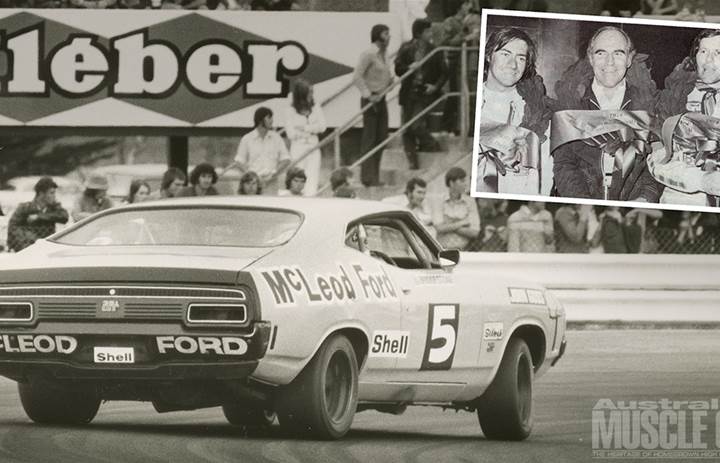
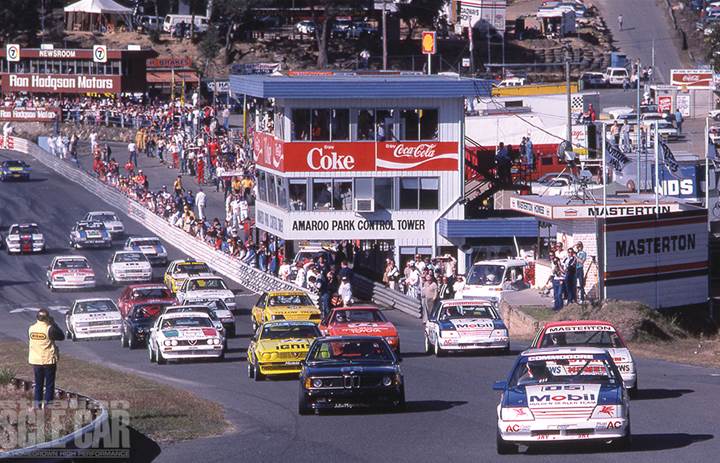

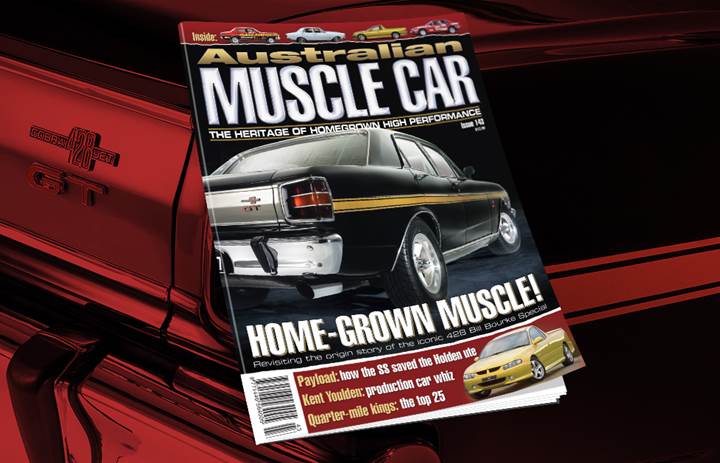
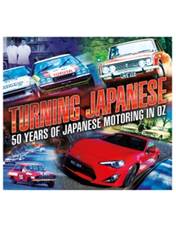
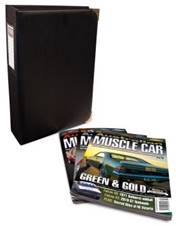
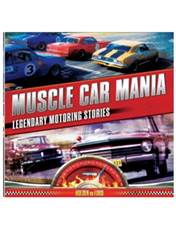
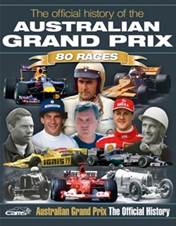
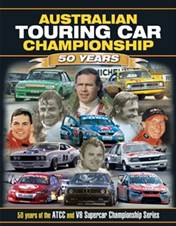

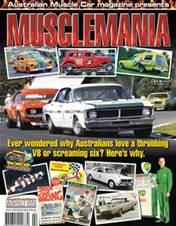
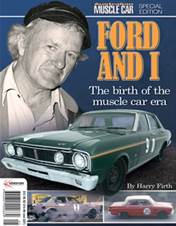
.jpg&q=70&h=226&w=176&c=1&s=1)
